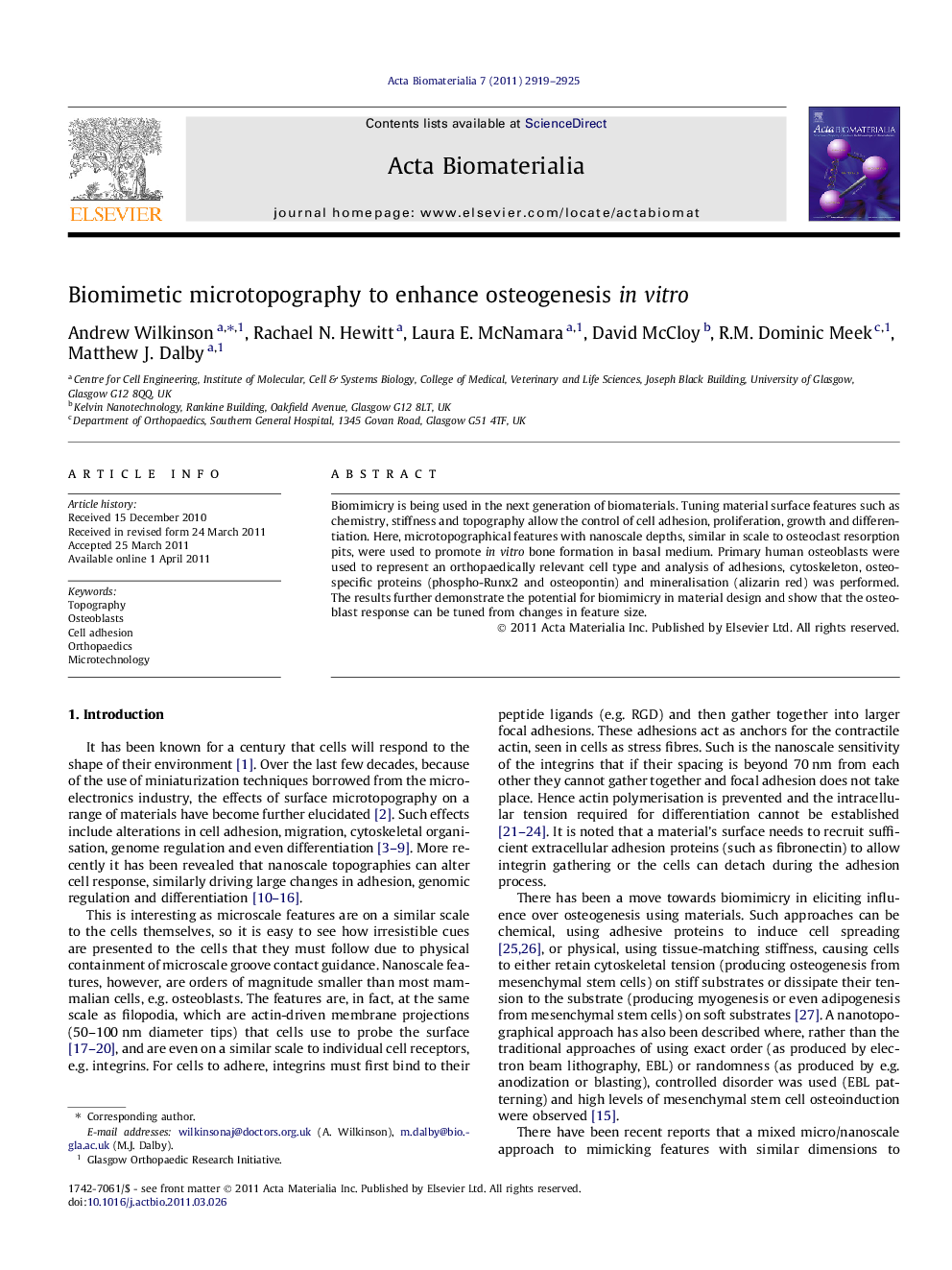| Article ID | Journal | Published Year | Pages | File Type |
|---|---|---|---|---|
| 1157 | Acta Biomaterialia | 2011 | 7 Pages |
Biomimicry is being used in the next generation of biomaterials. Tuning material surface features such as chemistry, stiffness and topography allow the control of cell adhesion, proliferation, growth and differentiation. Here, microtopographical features with nanoscale depths, similar in scale to osteoclast resorption pits, were used to promote in vitro bone formation in basal medium. Primary human osteoblasts were used to represent an orthopaedically relevant cell type and analysis of adhesions, cytoskeleton, osteospecific proteins (phospho-Runx2 and osteopontin) and mineralisation (alizarin red) was performed. The results further demonstrate the potential for biomimicry in material design and show that the osteoblast response can be tuned from changes in feature size.
